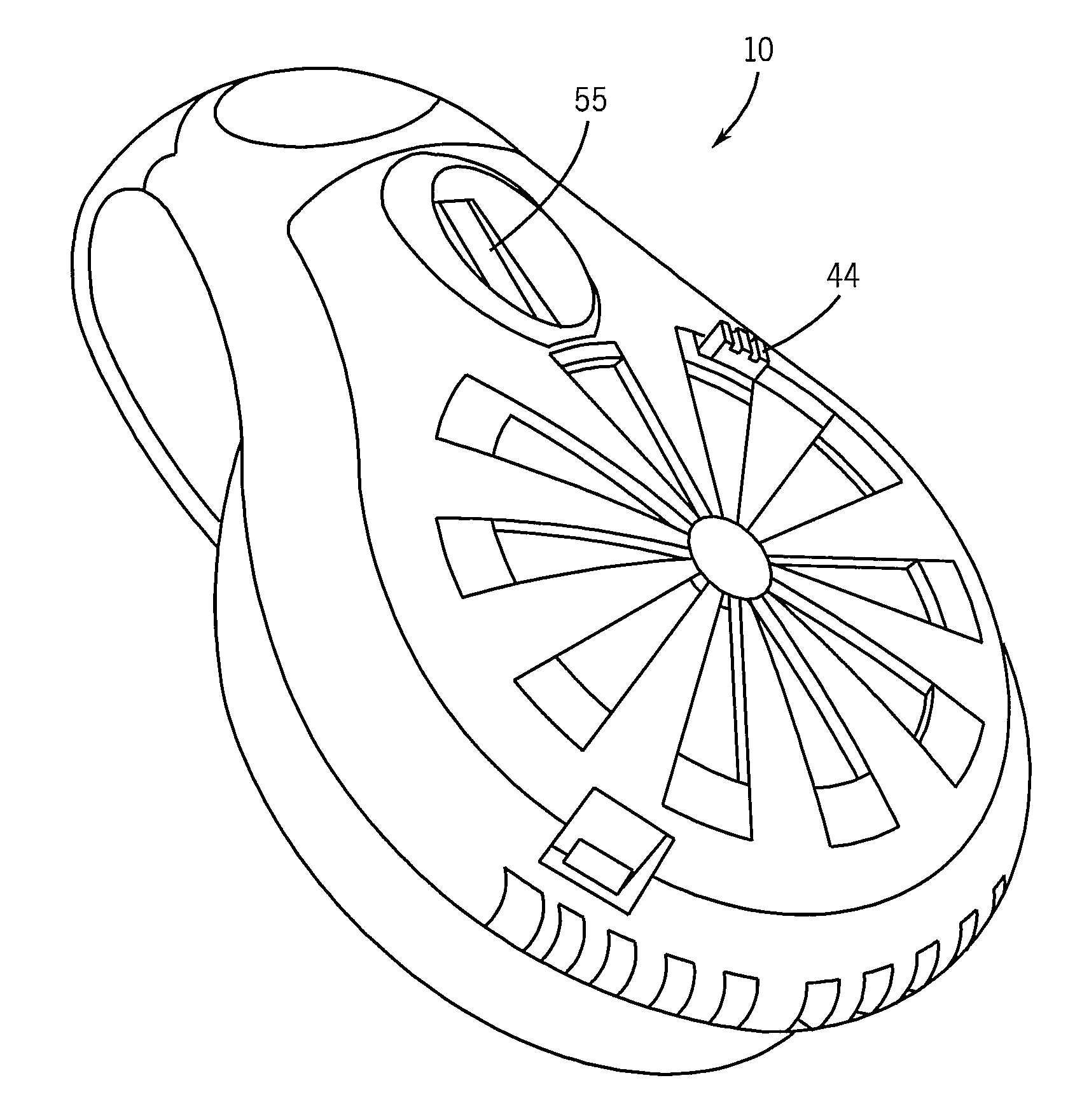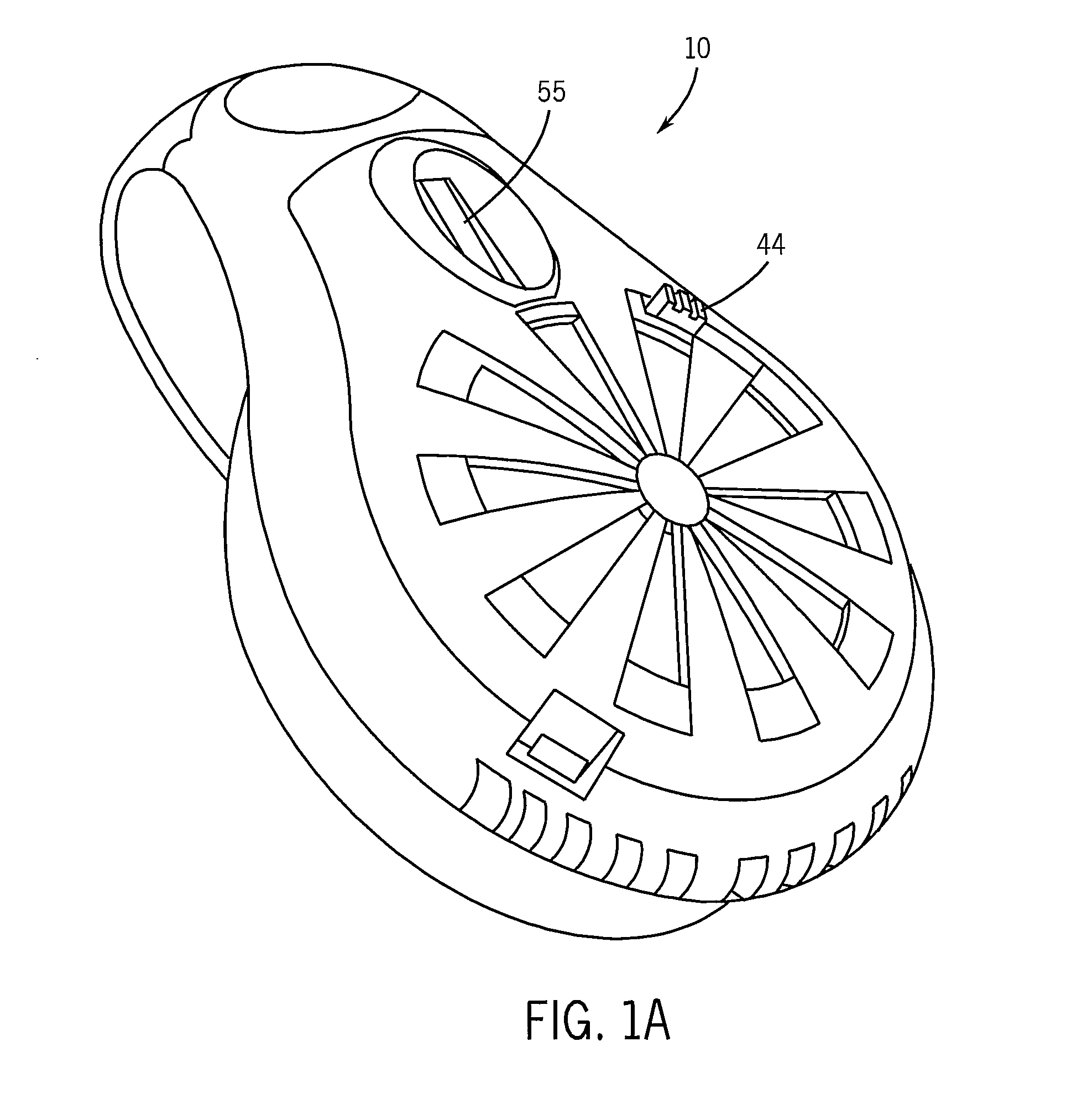Wearable chemcial dispenser
a dispenser and wearable technology, applied in the direction of disinfection, transportation and packaging, liquid transfer devices, etc., can solve the problems of increasing the overall cost of protection, not making a repeat application, and not understanding how long a particular application of the chemical is likely to remain effective, etc., to achieve the effect of convenient for consumers to understand and use, and less production costs
- Summary
- Abstract
- Description
- Claims
- Application Information
AI Technical Summary
Benefits of technology
Problems solved by technology
Method used
Image
Examples
Embodiment Construction
[0043]Referring first to FIGS. 1A, 1B and 2, there is shown a dispensing device 10. It has a main housing section 11, an intermediate housing section 12, an outer cover section 13 and a base cover section 14. The region between the main housing section 11 and the base cover section 14 houses the primary electrical parts.
[0044]In this regard, there are two AA batteries 16 which are in electrical contact with linkages 17, that in turn are connected to a spring-type switch 18, which (when the switch is closed) powers a small motor 19. An example of this type of switch is a micro-leaf switch of the sort available from the Wealth Metal Factory Ltd. of Hong Kong, China.
[0045]The motor 19 has a stem 20. That stem can be linked to the center of rotor 21 having vanes 24. When the motor receives power, stem 20 rotates and carries with it the rotor 21. The vanes on the rotor are aligned such that the rotation sucks air in through the openings 56 of the outer cover section 13 and then forces th...
PUM
 Login to View More
Login to View More Abstract
Description
Claims
Application Information
 Login to View More
Login to View More - R&D
- Intellectual Property
- Life Sciences
- Materials
- Tech Scout
- Unparalleled Data Quality
- Higher Quality Content
- 60% Fewer Hallucinations
Browse by: Latest US Patents, China's latest patents, Technical Efficacy Thesaurus, Application Domain, Technology Topic, Popular Technical Reports.
© 2025 PatSnap. All rights reserved.Legal|Privacy policy|Modern Slavery Act Transparency Statement|Sitemap|About US| Contact US: help@patsnap.com



